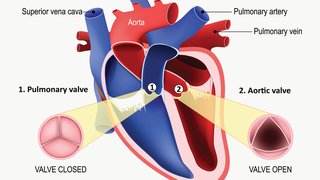
UT Southwestern is the first facility in North Texas to offer the latest advancement in treating complex abdominal aortic aneurysms (AAA) — the endovascular repair of AAAs with the Zenith® Fenestrated AAA Endovascular Graft. A technique developed and advanced in part at UTSW, the use of the Zenith Fenestrated Graft provides an option for AAA patients who previously couldn’t be treated with an endovascular graft because of the complexity of their aneurysm or its location close to the kidney arteries.
“About 20 percent to 40 percent of AAA cases can’t be treated with traditional endovascular grafts,” says R. James Valentine, M.D., Chair of Vascular Surgery. “The Zenith Fenestrated Graft helps fill that need, and it’s also an attractive option for elderly patients and those with comorbid conditions.”
Preserving Aortic Vessels
The Zenith Fenestrated Graft was approved by the Food and Drug Administration this past April for use in patients with an AAA or aneurysms that involve the aorta and iliac arteries. The graft, which is made of polyester and stainless steel, has three parts and is delivered to the aneurysm by way of a long, flexible tube. Stents may be placed through the fenestrations in the graft to help keep blood flowing into arteries that supply the kidneys and other abdominal organs.
“Fenestrated endografts allow the preservation of aortic branch vessels by incorporating them into the endovascular repair,” says Carlos Timaran, M.D., Chief of Endovascular Surgery, who is one of only about 40 surgeons in the country trained in the use of the Zenith Fenestrated Graft, and the only one in North Texas. “But until now, they could only be customized by the surgeon at the time of the operation or offered through clinical trials.”
Customized for Each Patient
The Zenith Fenestrated Graft is customized for each patient using CT scans and angiograms, which are turned into 3-D images. A trained physician, such as Dr. Timaran, then designs a fenestrated stent graft and sends the 3-D images and plan to the manufacturer in Australia, who creates a graft in about five weeks that’s custom-fit to the patient’s anatomy. The images are also used to determine the number, size, and location of the fenestrations.
“At UT Southwestern, we pioneered customized grafts for severe cases and have been using our own for years to treat patients referred to us from North Texas and the Southwestern U.S.,” says Dr. Timaran, who specializes in the endovascular repair of complex aortic and peripheral arterial problems. “The new Zenith Fenestrated Graft will allow us to serve patients more efficiently and help others who may have faced open surgery or perhaps had no treatment options at all.”










